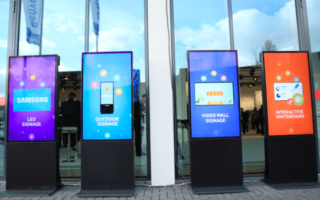The e-commerce market has never been a larger behemoth. Its success is calling entrepreneurs to the digital realm to start up their own new e-commerce business.
While few believe they are going to be the next Amazon, no entrepreneur doesn’t dream of success when they are starting a project. Success might take some luck, but it also comes with a lot of hard work.
New e-commerce startups need to consider their site design, their products, their brand but also their order fulfillment strategy. Thanks to Amazon setting a very high bar, if your e-commerce site does not fulfill orders exceptionally well, consumers will take their hard-earned dollars somewhere else.
One of the biggest challenges you will find about delivery fulfillment comes from final mile delivery. This guide is here to help you to understand what exactly last-mile delivery is and why it is so important.
Why Delivery is so Important for New Online Businesses
Many entrepreneurs have noticed the boom in e-commerce. E-commerce grew by 32% in 2020, the same year that U.S. online shopping sales reached $795 billion. This is very good for e-commerce, it created an issue in the realm of delivery, which is often a bottleneck.
Online shopping put such a strain on shipping that delivery giants like UPS and FedEx removed their long-standing delivery guarantees. Even e-commerce giants that hugely benefited from the e-commerce boom found themselves struggling with delivery; Amazon was forced to reorganize their Prime delivery services.
For you to survive in this e-commerce market, you need to not only think about your site and product but also your logistics journey. Nobody will buy from you again if they have to wait a long time.
What is Last-Mile Delivery?
There are three ‘miles’ when it comes to delivery:
The first mile of delivery typically refers to the distribution of the item from the manufacturer.
The middle mile is the long-distance transportation that brings the product to its final station before loading for delivery (involves going through customs, port, or hub storage).
The last mile delivery – involves the item being sent from a warehouse or fulfillment center to the customer. If you are a small business or have on-site storage, you might only need to think about last-mile delivery.
Every step of the supply chain is crucial, but the last mile is that which impacts the customer experience the most. If a product arrives and it is not in good shape or late, a customer will likely shop with a competitor for their next purchase. The last mile gives a business a chance to let its values and brand shine. There are over 112 million Amazon Prime members in America. This shows how much people value immediacy: it has created a culture where people expect quick delivery.
What are the Challenges of Last-Mile Delivery?
There are many costs and complexities involved in last-mile delivery and impede the goal of making the process as quick as possible. These are typically very unique to the delivery job, and it is impossible to give a comprehensive list. but even the location of the delivery can present problems
- Rural deliveries can involve long drives for a single package
- City deliveries involve high traffic volume, which can lead to delays due to people problems, traffic incidents, or confusing directions.
- Why Your Startup Should Start as It Means to Go On
- Empower Your Business with GridPanel Comprehensive Web Scraping Solutions
- Understanding the Role of Elastic Fibers in Modern Fabrics
- Cyber Defenders: A Look at the Global Cybersecurity Industry
- Elevate Your Business with Strategies from an Entrepreneur Author




